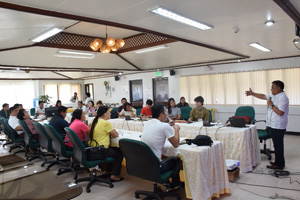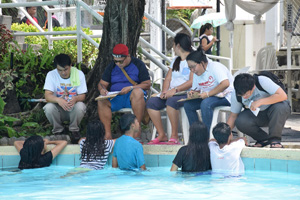 Considered as one of the fastest growing industries in the Philippines, tourism relies heavily on the natural resources and cultural wealth of the country. Thus, it is necessary to protect, develop, and conserve these resources.
Considered as one of the fastest growing industries in the Philippines, tourism relies heavily on the natural resources and cultural wealth of the country. Thus, it is necessary to protect, develop, and conserve these resources.
The increasing prominence of the country’s tourism industry yields both positive impact on the economy and negative impact on the environment. The anticipated continued increase in the number of tourists, will increase earnings from foreign exchange and promote the country’s tourism business. It is also expected to strengthen the country’s political and economic relations, but it is also expected to bring negative effects on the environment. A strong tourism industry is also likely to cause pollution, depletion of marine and forest ecosystems, disappearance of flora and fauna, exploitation of resources, accumulation of wastes, drinking water shortages, overcrowding, and many more.
To address the negative impacts on our environment, the government has issued a number of laws and guidelines on tourism and ecotourism development, such as the Tourism Act of 2009 (RA 9593), National Ecotourism Strategy (EO 111), and recently the Guidelines on Ecotourism Planning and Management in Protected Areas (DENR Administrative Order 2013-19).
 In line with this, the Forestry and Environment Research Division (FERD) of the Philippine Council for Agriculture, Aquatic and Natural Resources Research and Development of the Department of Science and Technology (DOST-PCAARRD) recently conducted a five-day training-workshop on Tourism Carrying Capacity for Sustainable Ecotourism Development.
In line with this, the Forestry and Environment Research Division (FERD) of the Philippine Council for Agriculture, Aquatic and Natural Resources Research and Development of the Department of Science and Technology (DOST-PCAARRD) recently conducted a five-day training-workshop on Tourism Carrying Capacity for Sustainable Ecotourism Development.
Dr. Lope A. Calanog, a freelance consultant in Ecosystem Services and Biodiversity Management, along with Foresters Alicia G. Calderon and Ma. Lourdes DC. Reyes served as the facilitators of the training-workshop. This was attended by 27 participants from different agencies throughout the regions.
The training-workshop aims to teach the participants the basic concepts and principles of tourism carrying capacity as it relates to ecotourism planning and development. It also aims to show the participants the proper way to compute tourism carrying capacity, particularly on how to estimate standard requirement of tourists and visitors in a specific ecotourism site or destination. This can help prevent overcrowding in famous tourist attractions in the country.
The participants found the training-workshop useful and relevant to biodiversity conservation and management, tourism planning and development, and community extensions, in which they are engaged.
